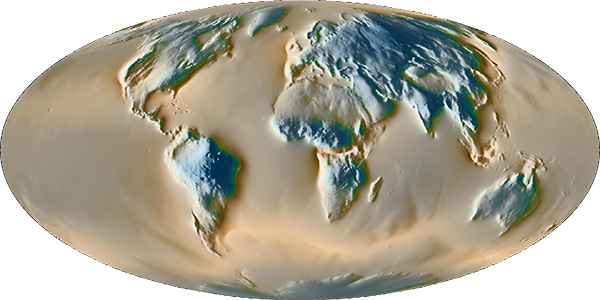

We provide here atmospheric, induced oceanic (response of the ocean to atmospheric pressure forcing) and hydrological loading estimates from various models at most IGETS (International Geodynamics and Earth Tide Service) sites and some other locations (Figure 1). We also provide temporal gravity variations due to polar-motion and length-of-day variations, including a self-consistent static ocean response
Atmospheric and induced oceanic (ocean response to pressure) loading estimates are computed using the European Centre for Medium Range Weather Forecasts (ECMWF) operational and reanalysis (ERA interim and ERA5) surface pressure fields, assuming an inverted barometer ocean response or a barotropic ocean model forced by air pressure and winds (TUGO-m) [Carrère & Lyard, 2003]. See here for more details and access to the files.
Hydrological loading are estimated from GLDAS/Noah v1 (2000-2016), v2.1 (2000-now) and GLDAS/CLM v2.2 (GRACE and GRACE-FO assimilated) (2003-now) [Rodell et al., 2004], ECMWF operational (not updated anymore) and reanalysis (ERA interim) models, MERRA-land [Reichle et al., 2011], MERRA2 [Reichle et al., 2017] using soil-moisture and snow field (canopy water is also included in GLDAS/Noah), and GRACE NASA GSFC iterated global mascons [Luthcke et al., 2013; Loomis & Luthcke, 2016; Loomis et al., 2019]. See here for more details and access to the files.
Non-tidal oceanic loading are estimated using two versions of ECCO (Estimating the Climate and the Circulation of the Ocean), namely ECCO (kf080i) and ECCO2. See here for more details and access to the files.
Earth rotation (Polar Motion and Length-Of-Day) and its induced ocean tide loading effects (assuming a self-consistent static ocean response) are available here. The filename gives the station name, the starting year and last year.
Figure 1: Location of the different stations where atmospheric, oceanic & hydrological loading effects are computed.
The list of all stations where atmospheric, oceanic & hydrological loading effects are computed
can be found here. Other stations can be added
upon request (please send me the coordinates).
Files are written according to the (pr)eterna format and are updated as soon models become available.
Careful: As TUGO-m model is forced not only by atmospheric pressure but also by surface winds, loading estimates from classical ocean general circulation model (such as ECCO) should not be added to the (ECMWF+TUGO-m) loading computations.